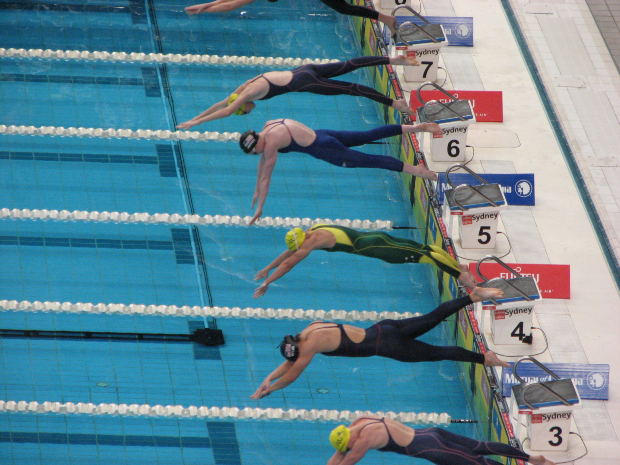 Classic style - frog
Classic style - frog
Today I will try to describe the classic style commonly known as frog. Behind us now backstroke and any. What else can I add in the introduction? I invite you to the swimming pool and have a nice frog swimming.
Some history…
- The oldest of the styles known already in antiquity. It was first described in 1538 year by Nicoles Wynman.
- Later, it was used less and less in competitions, because in the confrontation with crawl he presented himself poorly. It was all due to slow swimming speed.
- W 1904 year frog became a separate style during the competition.
- W 1918 German swimmers changed this style a bit, putting a lot of emphasis on footwork. They introduced a large opening of the legs when swimming breaststroke.
- From 1934 introduced the use of butterfly leg transfers, which resulted in higher speed and once again the classic frog was a thing of the past.
- W 1952 year, it was decided to separate the classic style from the butterfly, which brought competition back to the Olympics.
- W 1956 year was ordered, keep your head out of the water at all times. It could not be submerged as it was before.
Classic style - advantages and disadvantages
Advantages:
- Good orientation in the field.
- The hips and knees work, therefore it is indicated for people, who want to practice these games.
- Possible communication with other people, not as in the backstroke.
- Ability to travel long distances.
Defects:
- Classic style is the slowest of all styles.
- Complicated leg movements compared to other styles.
Breaststroke swimming pattern.
- We put ourselves in the starting position, i.e. straight legs, and hands facing forward.
- The hands are slightly bent at the elbows and we start the movement outwards with them (Backwards) and slightly down to the shoulder line. At the same time, we bend our legs at the knees like this, keep your feet close to your buttocks.
- Move your hands inward like this, so that the hands are under the chin, and elbows to the chest. At this time, we lean our head out and inhale the air.
- Legs kick off. Hands move to the starting position, and the head goes back under the water, where air is exhaled.
- Now our body lies slightly below the surface of the water and travels through it like an arrow. We're losing speed here. We start the whole process from the beginning. Please note, The less we stay still, the faster we go.
I wish you all a successful swimming and a nice time on the water. I also invite you to comment and share your swimming impressions.